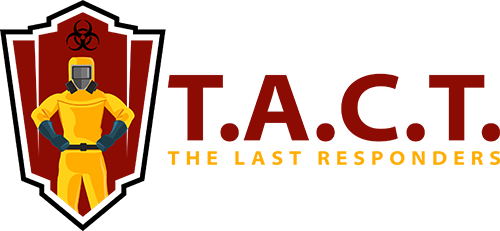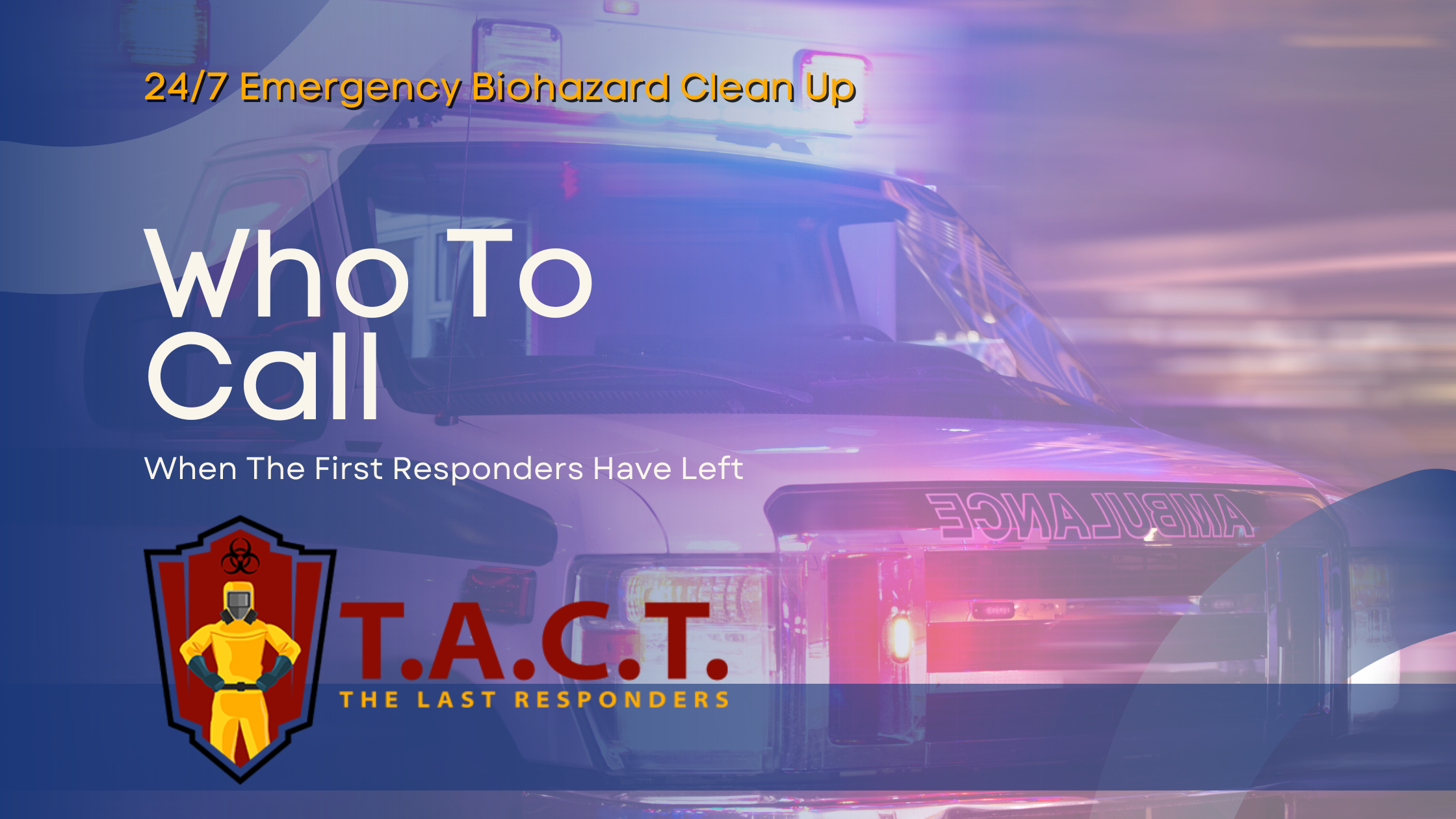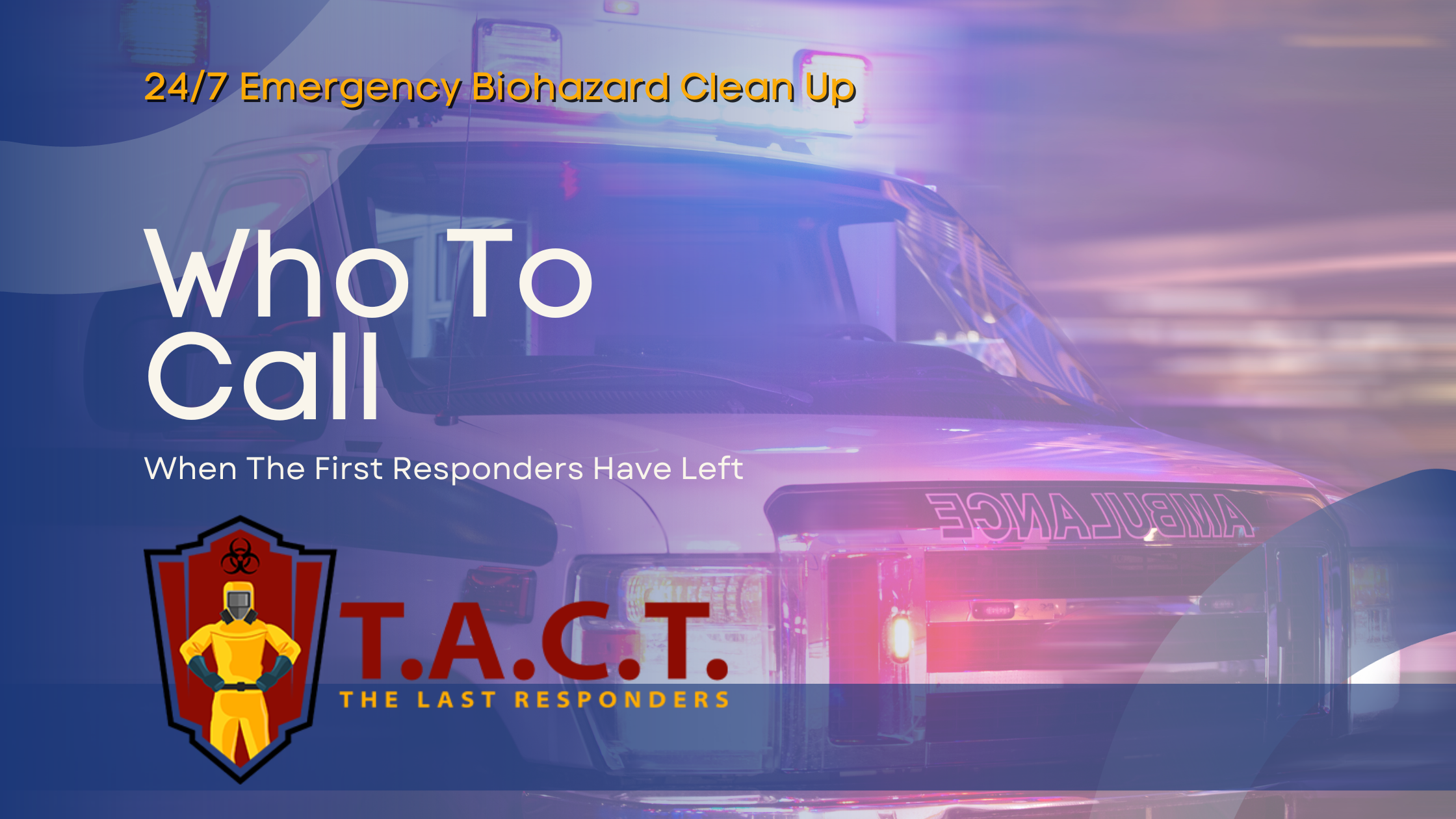tear gas
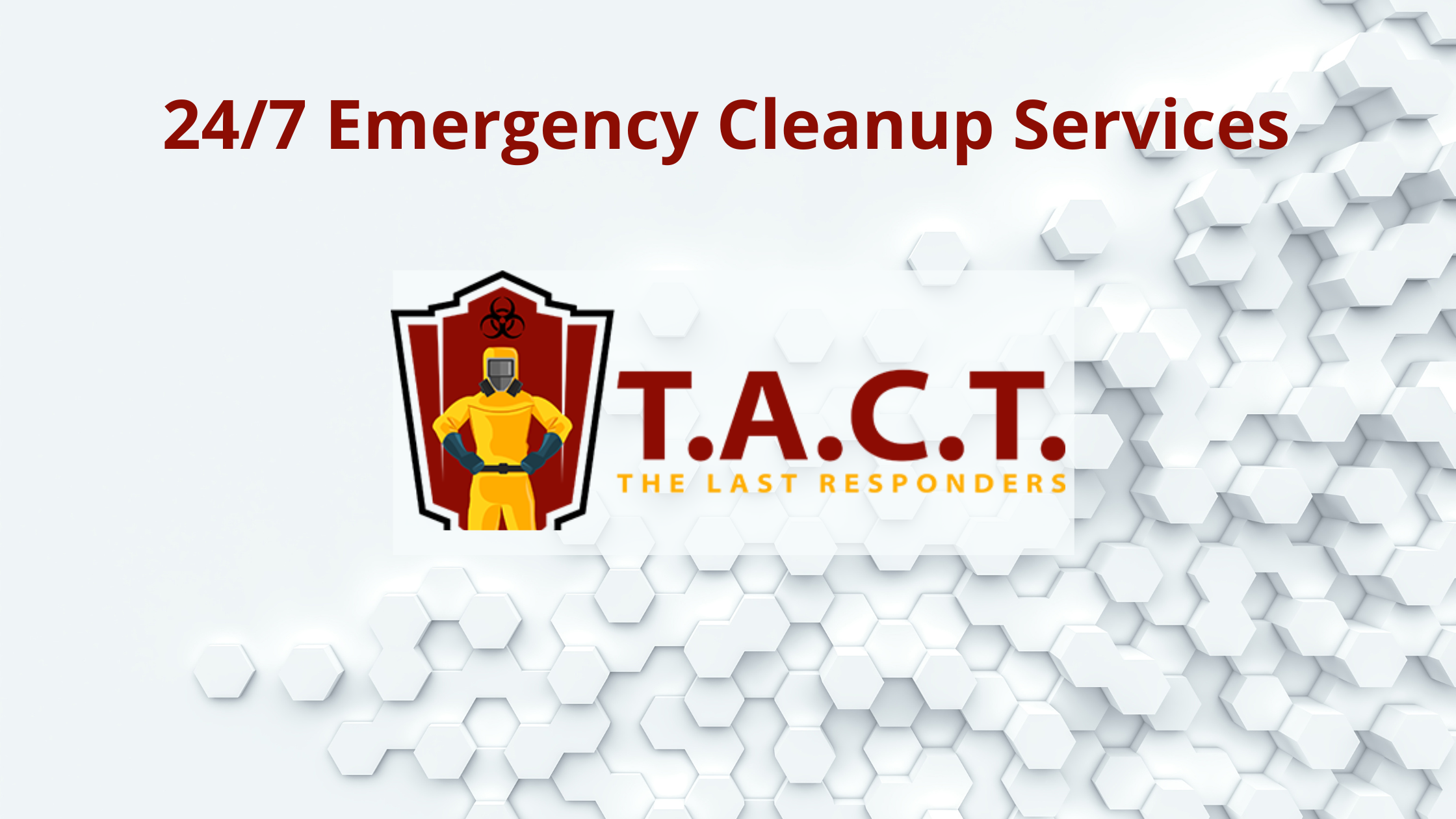
Effective Tear Gas Clean Up: Strategies for Safe and Thorough Removal
Tear gas is often used by law enforcement agencies as a crowd control tool in high-stress situations. It is specifically designed to disable humans temporarily by affecting their sensory functions, making it difficult for individuals to continue normal activities. However, its aftermath reveals a significant challenge—lingering residue that can pose severe health risks if not handled properly. For residents and businesses in North Atlanta, the expertise of TACT (Trauma and Crime Scene Cleaning Specialists) offers a reliable solution for addressing these complex situations effectively and compassionately.
Cleaning up tear gas is no simple task. It requires a combination of precision, professional equipment, and a strong understanding of hazardous materials. Each tear gas incident is a particular situation that requires a customized remediation approach. If you need assistance, contact TACT to ensure your particular situation is handled safely and professionally. This blog will explore the challenges of tear gas remediation, the best techniques for safe cleanup, and why professional services like TACT of North Atlanta are essential.
Understanding Tear Gas and Its Impact
Tear gas is made up of chemicals designed to disperse quickly and incapacitate individuals temporarily. The most common types include CS gas (chlorobenzalmalononitrile), CN gas (chloroacetophenone), and CR gas—these are different types of tear gas, each with unique chemical properties and effects. These compounds are typically dispersed as fine powder or liquid, spreading quickly through the air and covering surfaces within the affected area. Canisters are commonly used to disperse the chemicals, and their safe management is crucial to prevent further contamination.
While the immediate effects of tear gas include burning skin, burning sensation in the nose and throat, tearing, and cough, as well as temporary blindness, the residue it leaves behind can create lasting hazards. Tear gas irritates mucous membranes, including the eyes, nose, and throat, causing symptoms such as a runny nose, coughing, and burning sensations. This residue can linger on walls, furniture, carpets, and ventilation systems, leading to long-term exposure risks such as respiratory issues and chemical burns. Improper handling of these chemicals can cause significant harm, making professional cleanup essential. Without proper remediation, tear gas-contaminated spaces may remain unsafe for extended periods.
Many people underestimate the complexity of tear gas cleanup. From durable surfaces like walls to porous materials such as upholstery, the diversity of affected materials and spaces adds to the challenge. Failing to address these thoroughly can result in ongoing health risks. This is where professional expertise becomes indispensable.
Challenges in Tear Gas Cleanup
Tear gas remediation is a highly specialized process due to several challenges, including:
Before beginning any cleanup, it is crucial to conduct an initial assessment and thorough inspection to determine the scope of contamination. This helps identify affected areas, evaluate damage, and decide on the most effective remediation steps.
1. Identifying the Extent of Contamination
The first step in any cleanup is assessing the scope of the damage. This requires attention to detail, such as identifying areas where residue may not be immediately visible, like ventilation systems or crevices.
2. Contamination of Porous Materials
Soft materials such as carpets, furniture, and bedding can absorb tear gas particles, making them particularly difficult to clean. Other items, such as curtains and sheets, may also require cleaning or removal if they have been exposed. Often, these items may need to be removed entirely if contamination is severe. It is also important to thoroughly clean all other surfaces that may have come into contact with tear gas residue to ensure complete remediation.
3. HVAC System Contamination
Tear gas can infiltrate HVAC systems, spreading residue throughout entire buildings. Cleaning these systems is essential to prevent recurring exposure, but it requires specialized tools and methods. Before cleaning, turn off heating and HVAC systems to prevent the spread of residue, as heat can cause tear gas particles to become airborne and increase the risk of recontamination or fire hazards.
4. Health Risks During Cleanup
Without proper protective equipment, the cleanup process itself can expose individuals to harmful residue. Cleaning must be approached with the utmost caution.
5. Choosing the Right Cleaning Methods
Using ineffective or generic cleaning products, or relying solely on conventional methods, can result in residue being spread further instead of being removed. It is important to select the right cleaners for tear gas residue, as each surface may require a different cleaning method based on its material and level of contamination. Ensure all surfaces are properly treated to prevent reactivation of tear gas chemicals.
Effective Cleanup Methods and Techniques
To address these challenges, a combination of specialized approaches and professional-grade tools is necessary. It is crucial to follow a systematic cleaning process and stick to established protocols for removing tear gas residue, as this ensures safety, prevents recontamination, and leads to effective decontamination. Below are some of the methods used in effective tear gas remediation:
1. Professional-Grade HEPA Vacuuming
Use a vacuum equipped with HEPA filters to remove fine particulate matter from hard surfaces. Using the correct filter in the vacuum is essential to prevent tear gas particles from becoming airborne during cleanup. This step is crucial for ensuring that the smallest tear gas particles are effectively captured.
2. Specialized Cleaning Agents
Hard surfaces, such as walls and floors, require cleaning solutions specifically designed to neutralize tear gas residue. These agents break down chemical compounds, rendering them inert and safe.
3. Deep Cleaning of Porous Materials
For furniture and carpets, deep-cleaning methods like steam cleaning or extraction are often employed. Items that cannot be effectively cleaned may need to be removed to eliminate all contamination.
4. Air Filtration Systems
Airborne particles must be addressed using advanced air filtration setups. Negative air machines and industrial air scrubbers are used to clean the air and reduce residual contamination.
It is important to isolate each room and systematically clean all rooms within the building to prevent the spread of contaminants. Once cleaning is complete, cleaned areas should be sealed to prevent cross-contamination and recontamination.
5. Protective Measures During Cleanup
Personnel involved in the cleanup wear full personal protective equipment (PPE), including gloves, goggles, and respirators, to avoid exposure while working.
6. Verification of Cleanliness
After the cleanup process, professional teams perform thorough inspections to ensure no residue remains. A "sniff test" or specialized particle testing may be conducted to confirm safety.
Why Partner with TACT of North Atlanta?
When it comes to tear gas cleanup, hiring a professional service like TACT of North Atlanta ensures that the job is handled quickly, effectively, and safely. TACT specializes in the remediation of hazardous materials and understands the physical and emotional toll these situations can take on those involved. Their team is trained in:
Comprehensive Assessments: TACT conducts detailed evaluations of affected spaces, ensuring no area is overlooked.
Specialized Equipment and Techniques: From HEPA vacuums to exclusive cleaning agents, TACT uses cutting-edge equipment for precise cleanup.
Emergency Response: With 24/7 availability, TACT is ready to mobilize and address death cleaning services and other highly urgent situations, offering support when clients need it most.
Clear Communication: TACT works closely with clients to explain the necessary steps, provide regular updates, answer questions compassionately, and ensure clients can speak directly with the owner or a knowledgeable representative for prompt assistance.
By choosing TACT of North Atlanta, you’re partnering with a team committed to restoring your space in a way that prioritizes safety, health, and professionalism.
Final Thoughts
Tear gas cleanup is a task that should not be attempted without proper knowledge and equipment. DIY efforts can not only fail to address all contamination but also put individuals at further risk. Professional services, like those offered by TACT of North Atlanta, excel at handling these situations with expertise, urgency, and consideration for the physical and emotional challenges involved.
If you’re dealing with the aftermath of tear gas exposure, don’t wait. Reach out to TACT of North Atlanta for effective, thorough, and compassionate remediation. With their help, you can ensure a safe environment for yourself, your family, or your team.
Latest news
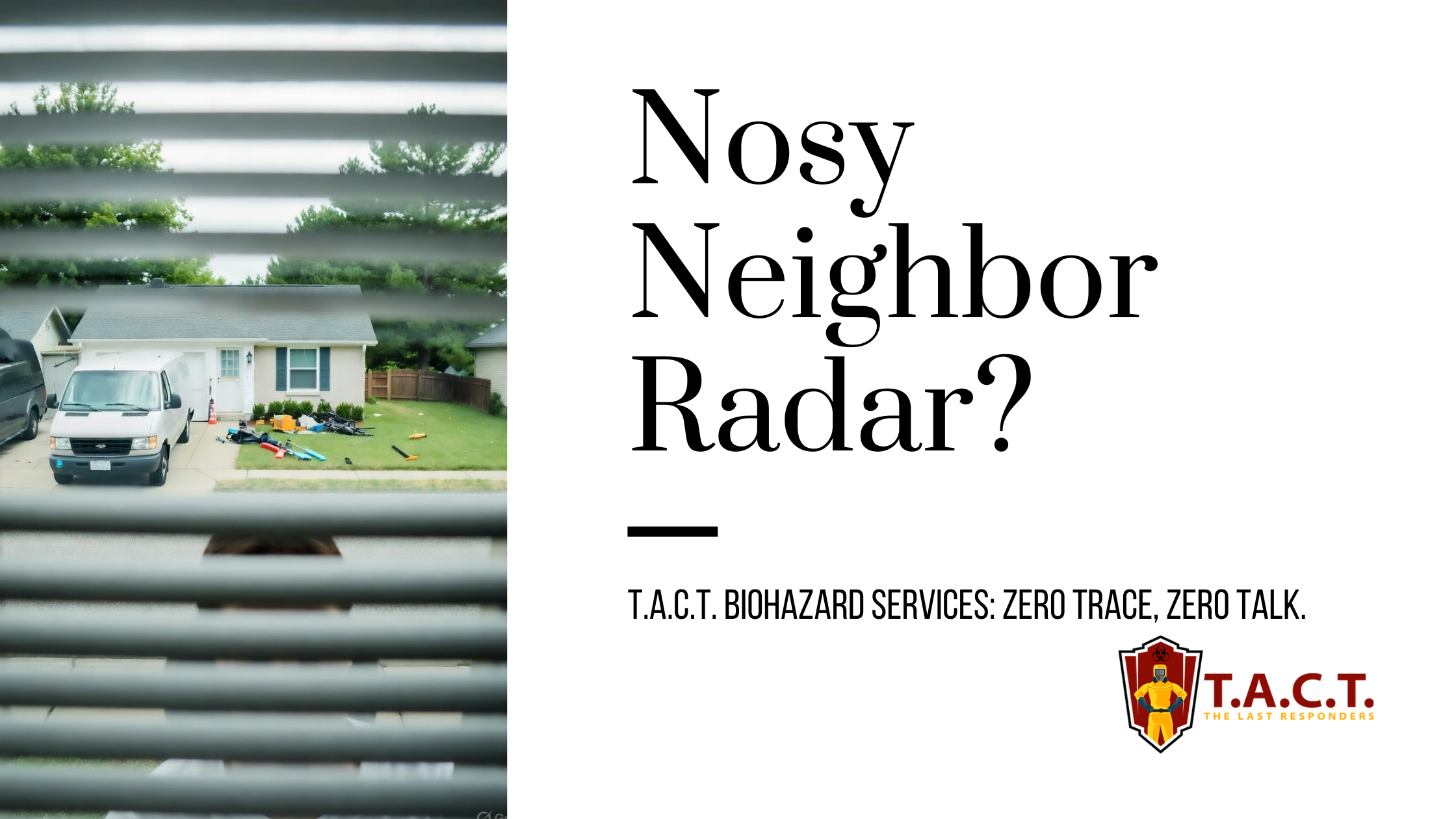
Nosy neighbors peeking? T.A.C.T. North Atlanta offers discreet biohazard remediation for rodent infestations, mold, hoarding, and more. Unmarked vehicles, quiet experts, full privacy—24/7 service at 470-781-4775.
Read More